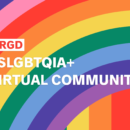Elevating Design Voices: Josh Skinner RGD
Written by Josh Skinner RGD, Apartment List
As the RGD celebrates the work and experiences of our Black and Brown Members, we hear from Josh Skinner RGD, Senior Product Designer, Lever and Professor, Art & Design, Centennial College.
What are the ways in which you experience racism in the design industry?
"You may have to work twice as hard to get half as much”— I heard this a lot growing up and to be honest, I didn’t fully understand it until I became an adult. Now I have seen that when you are Black, Indigenous or a Person of Colour (BIPOC) and are working in an industry such as design where there aren't many of you, expectations change. There are both higher expectations and extra scrutiny placed upon you. People question your ideas, they question your decisions, your work. You could start each project having to prove you’re a subject matter expert and any slip up means a reset. As an example, I’ve worked with clients who have challenged everything I said as a designer, but they changed their tune when my boss (a white man) reiterated what I said.

This industry has been historically difficult for anyone who isn't white to get their foot in the door. Who and/or what helped you navigate it?
I was fortunate to have a lot of support from my professors in college. When I entered the industry, the iPhone 4S was still the latest innovation and responsive design was the hottest trend. My professors’ encouragement and support led me to discover my interest in screen and web design. I became fascinated with the possibilities: grid layouts, motion, animations and typography. From there, I discovered my passion for ethics and accessibility in design after going to conferences, attending webinars, meeting people and seeing the impact design has on their lives.
Our popular Canadian design history is rooted in the work of European modernism, but there’s so much more out there. Who and/or what influences you?
We’re often so focused on delivering “industry standard” designs and experiences that we forget to consider who defined those “standards”. In the product design world, we often look to the designers in big tech for inspiration and guidance, as they’ve worked on some of the most well-known patterns that we see today. However, a lot of that design is rooted in the work, perceptions and perspectives of white men. We shouldn’t close the door to other ways of thinking about and solving a problem. That isn’t to say that styles like Swiss modernism aren’t awesome and don’t bring great principles of design to the table (as my former professors can probably attest to, I was obsessed with it in college!). However, I do think that we’re very quick as an industry to dismiss ideas and solutions that aren’t established trends. At work, I've proposed design solutions that were contrary to industry standards and these were dismissed as wrong.
I think that some of the people who have inspired me the most and led me down my path are some of the classmates that I graduated with. They’ve managed to take design principles and make them their own. They have carved out their own space in the design world by challenging traditional concepts and, as a result, have created designs that feel fresh and uniquely them.

What advice would you give to a recent grad?
Once when I was teaching a design class, a Black student came up to me and told me that they really enjoyed my lectures and that it meant a lot to them to see a young Black man teaching a course. I had been in the industry several years at that point and hadn't really thought much about not having many people who looked like me to model my career after. But to hear someone relay that was very eye-opening to me. When it comes to finding people who will inspire and mentor you, my advice to recent grads is to look for those who live and breathe their craft with a mindset and passion that you can identify with. I didn't see many people who looked like me in the industry, but I realized there are creative people everywhere, across various mediums outside our industry. Some of the people who inspire me aren’t designers by trade, but I find myself engaged with their approach to finding creative solutions to problems.
Where do we go from here?
That’s a big question. One answer that comes to mind is how important it is for people to become familiar with the writings of scholars who have focused on systemic racism such as Angela Davis, James Baldwin and others like them.
I also think that people and organizations are very focused on diversity and inclusion (D&I) initiatives today, but it seems that it isn't really clear what organizations are actually striving for. For example, in D&I training I received at work in the past, I was told that a team comprised of 5 white men from various career backgrounds is “diverse”. If we’re going to be able to tackle systemic racism in our industry, we’ll need to move past that line of thinking. Systemic racism is designed to ensure that there is neither equity nor equality for BIPOC. We’ll need to deconstruct these systems of oppression in order to move past them. As a first step, I think our industry really needs to understand and define what we mean when we say we want diversity and better identify the issues we are trying to address.

Josh Skinner RGD
Apartment List
Tag
Related Articles


Vanessa Eckstein RGD, Elana Rudick RGD












